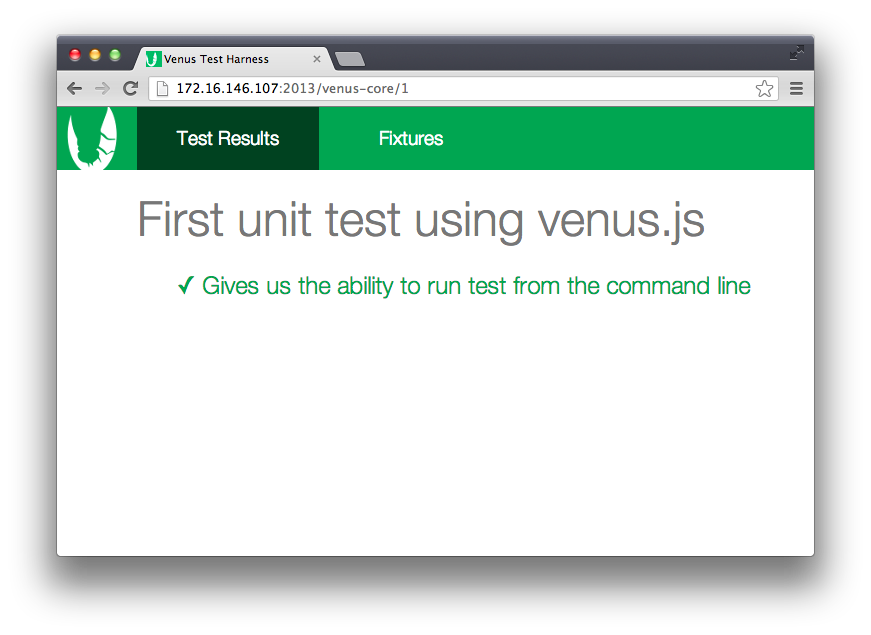Getting started¶
Install Venus.js¶
- Install Node.js:
Please see the instructions at http://www.nodejs.org for getting node.js running on your platform.
- Install Venus.js via NPM:
npm install -g venus
- Verify installation:
venus demo
Write your first test¶
Venus.js designed to work with multiple testing libraries (see Supported Libraries).
In the directory of your choice, create a new file (lets call it example.js):
/**
* @venus-library mocha
*/
describe('First unit test using venus.js', function() {
it('Gives us the ability to run test from the command line', function() {
expect(2 + 2).to.be(4);
});
});
Run your first test¶
venus run -t example.js -e ghost
Output should look similar to
info: Serving test: http://172.16.146.107:2013/venus-core/1
info: Venus server started at http://172.16.146.107:2013 and is serving 1 test suites
PhantomJS/1.9.1 /home/smclaugh/example.js
First unit test using venus.js
--------------------------------------------------------
✓ Gives us the ability to run test from the command line
--------------------------------------------------------
1 tests executed in 899 ms
1 ✓ tests passed
0 x tests failed
Run tests in the browser¶
You can also run tests with Venus manually in a browser. To do this, start Venus without the -e (environment) flag:
venus run -t example.js
info: Serving test: http://172.16.146.107:2013/venus-core/1
info: Venus server started at http://172.16.146.107:2013 and is serving 1 test suites
Next, open the first URL printed above in your browser of choice (note: the URL on your machine will be different). You should see a screen similar to this:

Getting help¶
Having issuse getting these examples to work? Check out the Venus.js Google Group.